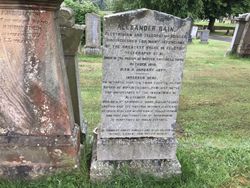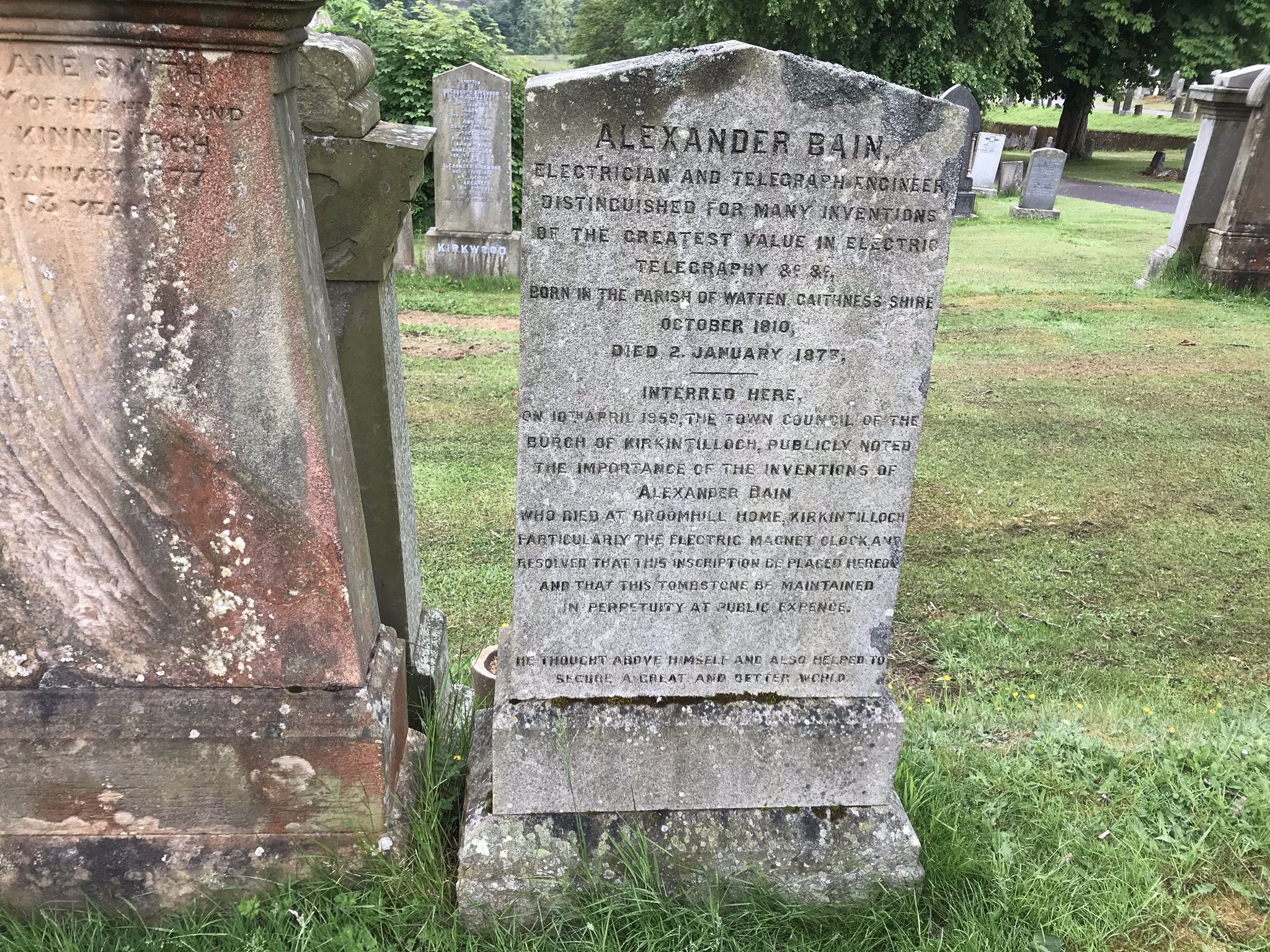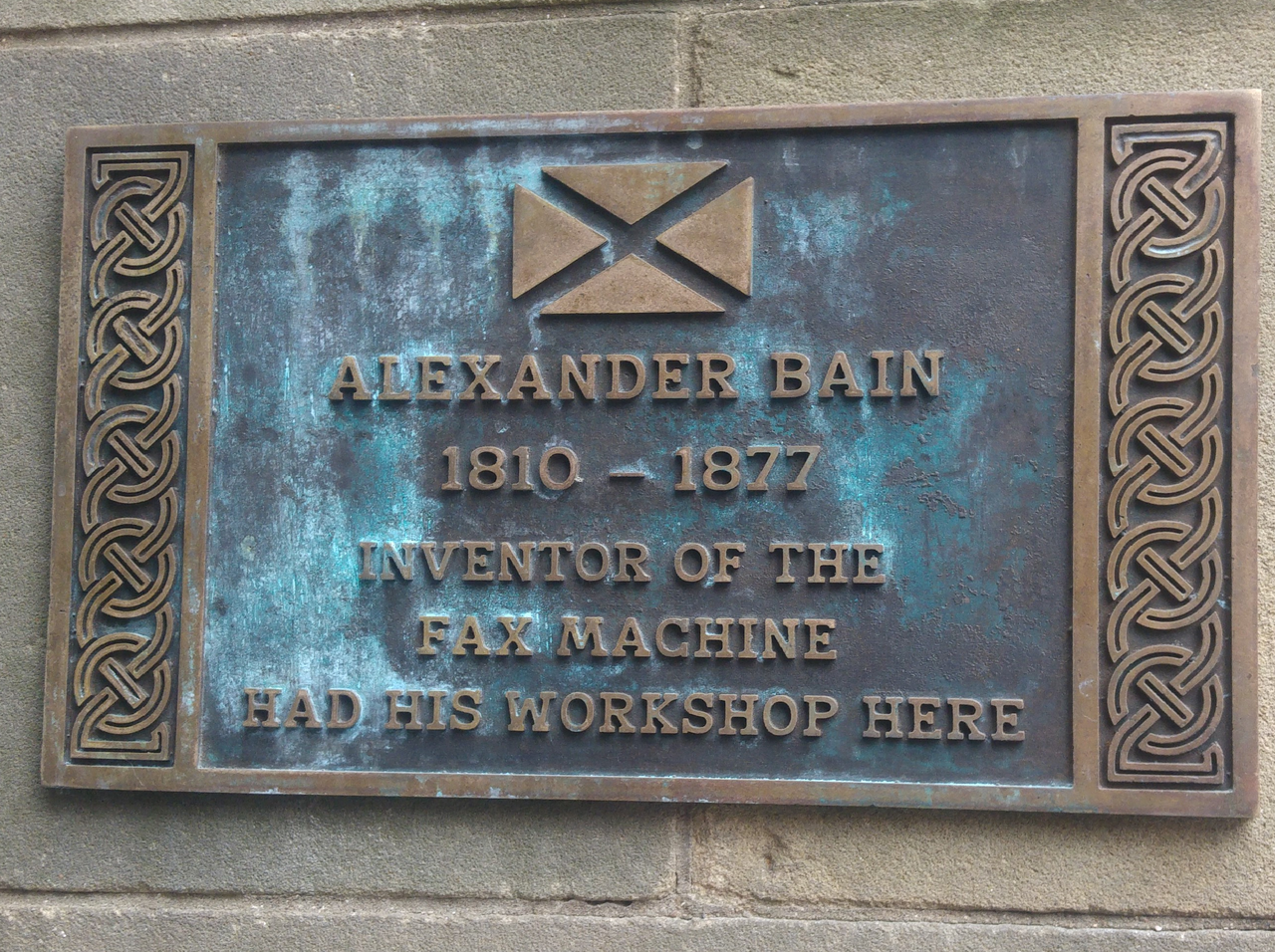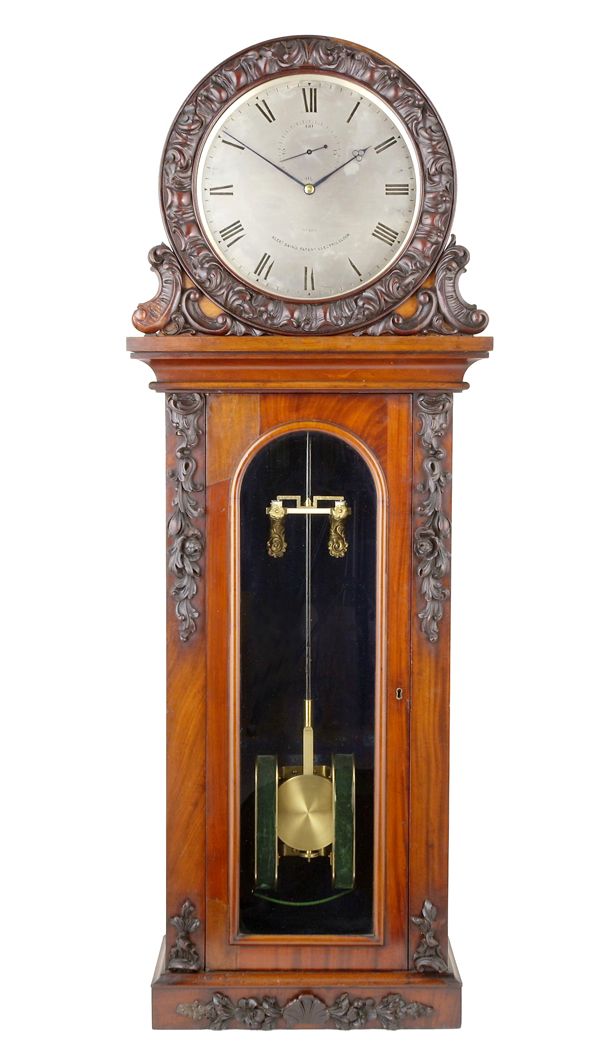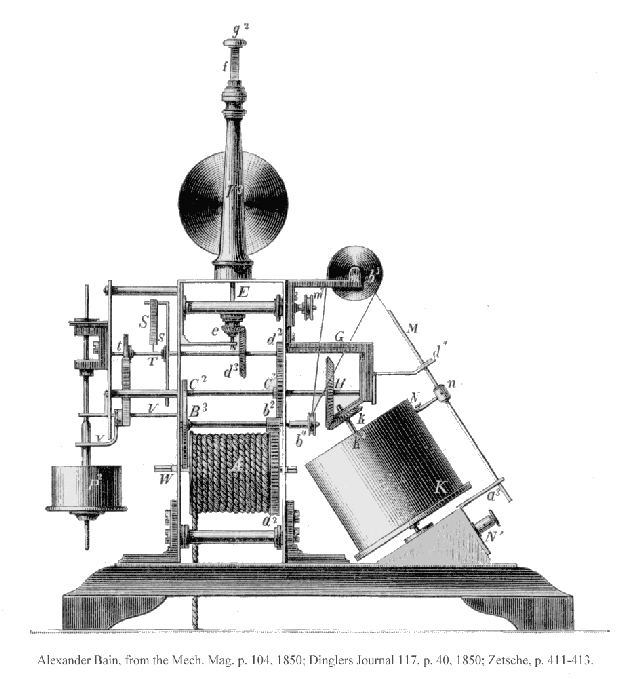Electric clocks[edit]
In 1840, desperate for money to develop his inventions, Bain mentioned his financial problems to the editor of the Mechanics Magazine, who introduced him to Sir Charles Wheatstone. Bain demonstrated his models to Wheatstone, who, when asked for his opinion, said "Oh, I shouldn't bother to develop these things any further! There's no future in them."[2] Three months later Wheatstone demonstrated an electric clock to the Royal Society, claiming it was his own invention. However, Bain had already applied for a patent for it. Wheatstone tried to block Bain's patents, but failed. When Wheatstone organised an Act of Parliament to set up the Electric Telegraph Company, the House of Lords summoned Bain to give evidence, and eventually compelled the company to pay Bain £10,000 and give him a job as manager, causing Wheatstone to resign.
Bain's first patent was dated 11 January 1841, and was in the names of John Barwise, chronometer maker, and Alexander Bain, mechanist. It describes his electric clock which uses a pendulum kept moving by electromagnetic impulses. He improved on this in later patents, including a proposal to derive the required electricity from an "earth battery", which consisted of plates of zinc and copper buried in the ground.
In December 1841, Bain in conjunction with Lieutenant Thomas Wright RN, patented a method for using electricity to control railway engines by turning off steam, marking time, giving signals, and printing information at different locations. The most significant idea incorporated in the patent was his plan for inverting the needle telegraph earlier developed by Ampere, Wheatstone and others: instead of making signals by a pivoted magnetic needle under the influence of an electromagnet, he made them by suspending a movable coil between the poles of a fixed magnet. A similar concept appears in Sir William Thomson's siphon recorder. Bain also proposed to make the coil record messages by printing them, an idea he developed further in a subsequent patent. His telegraph was also successful abroad: "The initial Austrian Bain instruments were made by Johann Michael Ekling in Vienna, and later by the k.k. Telegraphenwerkstätte Wein, the Imperial Royal Telegraph Workshops Vienna."
Electric clocks[edit]
In 1840, desperate for money to develop his inventions, Bain mentioned his financial problems to the editor of the Mechanics Magazine, who introduced him to Sir Charles Wheatstone. Bain demonstrated his models to Wheatstone, who, when asked for his opinion, said "Oh, I shouldn't bother to develop these things any further! There's no future in them."[2] Three months later Wheatstone demonstrated an electric clock to the Royal Society, claiming it was his own invention. However, Bain had already applied for a patent for it. Wheatstone tried to block Bain's patents, but failed. When Wheatstone organised an Act of Parliament to set up the Electric Telegraph Company, the House of Lords summoned Bain to give evidence, and eventually compelled the company to pay Bain £10,000 and give him a job as manager, causing Wheatstone to resign.
Bain's first patent was dated 11 January 1841, and was in the names of John Barwise, chronometer maker, and Alexander Bain, mechanist. It describes his electric clock which uses a pendulum kept moving by electromagnetic impulses. He improved on this in later patents, including a proposal to derive the required electricity from an "earth battery", which consisted of plates of zinc and copper buried in the ground.
In December 1841, Bain in conjunction with Lieutenant Thomas Wright RN, patented a method for using electricity to control railway engines by turning off steam, marking time, giving signals, and printing information at different locations. The most significant idea incorporated in the patent was his plan for inverting the needle telegraph earlier developed by Ampere, Wheatstone and others: instead of making signals by a pivoted magnetic needle under the influence of an electromagnet, he made them by suspending a movable coil between the poles of a fixed magnet. A similar concept appears in Sir William Thomson's siphon recorder. Bain also proposed to make the coil record messages by printing them, an idea he developed further in a subsequent patent. His telegraph was also successful abroad: "The initial Austrian Bain instruments were made by Johann Michael Ekling in Vienna, and later by the k.k. Telegraphenwerkstätte Wein, the Imperial Royal Telegraph Workshops Vienna."
Inscription
ALEXANDER BAIN
Electrician and telegraph engineer, distinguished for many inventions of the greatest value in electric and telegraphy. Born in the Parish of Watten, Caithness Shire October 1810, Died 2 January 1877.
INTERRED HERE, on 10th April 1959, the town council of the burgh of Kirkintilloch, publicly noted the importance of the inventions of Alexander Bain, who died at Broomhill Home, Kirkintilloch. Particularly the Electric Magnet Clock and resolved that this inscription be placed hereon and that this tombstone be maintained in perpetuity at public expense.
He thought above himself and also helped to secure a great and better world.
Gravesite Details
Bio courtesy Wikipedia
Advertisement
Records on Ancestry
Sponsored by Ancestry
Advertisement
